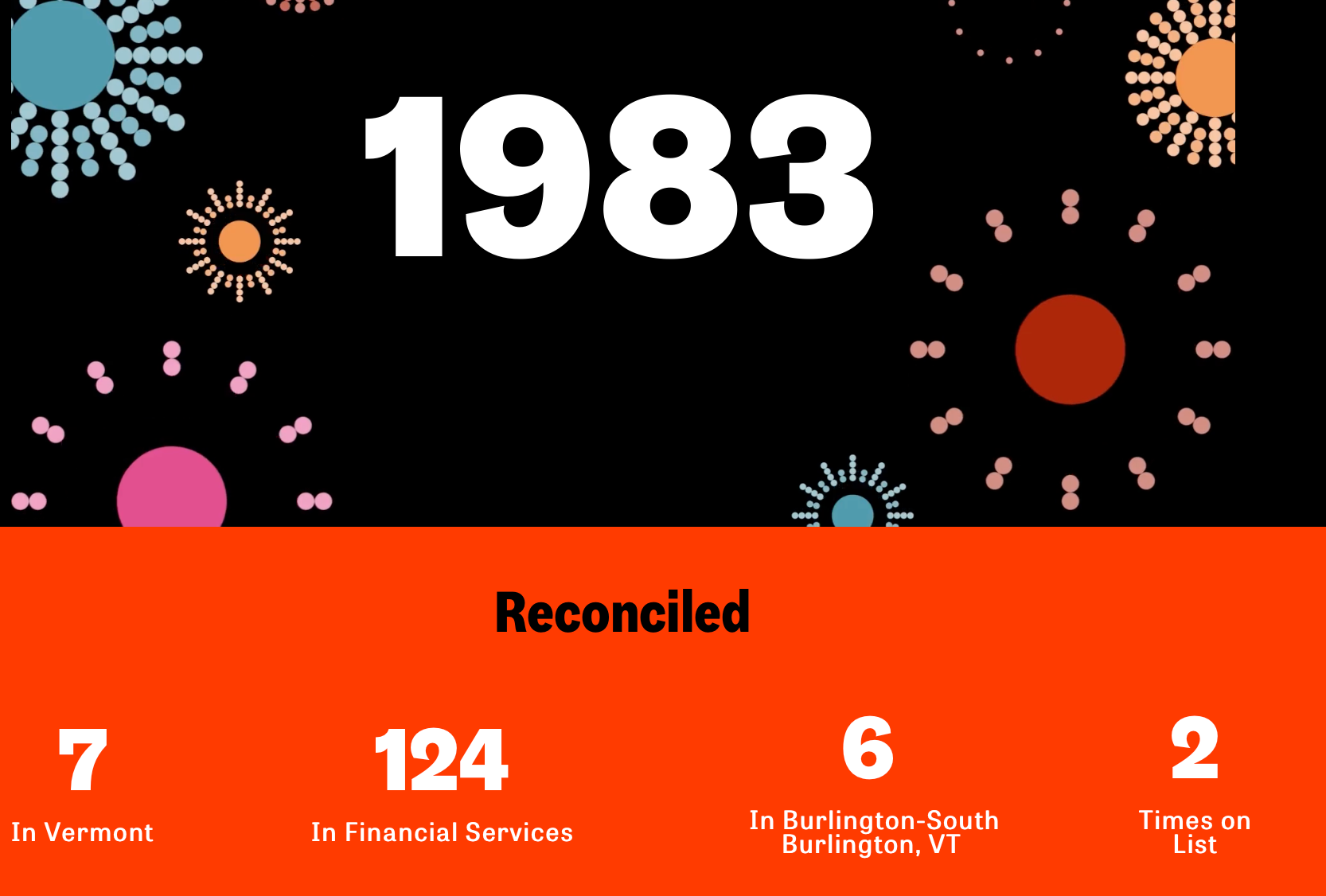Road Map to Seasonal Hiring: A Comprehensive Guide
Reconciled It • May 18, 2023
Your Small Business Guide to Seasonal Staffing
As the seasons change, so does the demand across various sectors, making seasonal hiring a pivotal factor in many businesses. Hiring for seasonal positions, however, can often feel like navigating a labyrinth of challenges and complexities. Reconciled is here to guide you through the twists and turns of seasonal hiring, ensuring that you recruit effectively, manage seamlessly, and pave the way for operational success.
Step 1: Identifying Your Needs
Before embarking on your seasonal hiring journey, it's vital to identify your business needs accurately. Analyze previous years' data
to anticipate the surge in demand, determine the number of additional staff required, and specify the skills and qualifications needed. Recognize the roles that need to be filled and the job responsibilities associated with each.
Step 2: Early Recruitment
Starting your recruitment early gives you a larger pool of applicants and more time to assess candidates. Advertise your vacancies through various channels, including online job boards, social media, and local community networks. Clearly communicate the job roles, expectations, and duration of the contract.
Step 3: Efficient Screening and Interviews
Due to the large volume of applicants and the time-sensitive nature of seasonal hiring, streamlining your screening and interview process is crucial. Implement a well-structured interview process and focus on the essential skills and adaptability of the candidates. Group interviews can be time-efficient and also help assess candidates' team interaction capabilities.
Step 4: Quick and Effective Onboarding
Once you've selected your seasonal staff, a structured, efficient onboarding process is paramount. Use easy-to-understand training materials and consider e-learning modules to expedite the process. Make sure your new hires understand their responsibilities, work schedules, and the company culture.
Step 5: Seamless Integration
Integrating seasonal staff into your existing team smoothly is key to operational efficiency. Encourage team bonding and foster an inclusive work culture. Assigning a mentor or buddy from the existing staff can help seasonal employees settle in quickly and perform effectively.
Step 6: Employee Engagement
Keep your seasonal staff motivated and engaged to reduce turnover. Communicate the potential for future opportunities, offer performance-based incentives, and appreciate their efforts regularly. Even though their stint may be temporary, they should feel valued and recognized.
Step 7: Legal Compliance
Navigating the legal landscape of seasonal hiring can be tricky. Stay updated with laws and regulations pertaining to seasonal workers, such as wage and hour laws, overtime pay, and age restrictions. Clear communication of these rules to seasonal employees can prevent compliance issues.
Step 8: Post-Season Evaluation
After the season ends, take the time to evaluate the process. Gather feedback from seasonal employees, review their performance, and analyze any challenges encountered. This evaluation will provide insights for refining future hiring processes. Don’t forget to maintain a good relationship with seasonal workers who perform well - they might be assets in the upcoming seasons.
We can help you get there!
Seasonal hiring, with its unique dynamics, can seem daunting. However, with a well-defined road map, the journey can become a lot smoother. Our HR professionals can help you navigate this labyrinth. By identifying your needs, recruiting early, onboarding effectively, and managing staff efficiently, you can harness the power of seasonal hiring to meet demand surges and contribute to business success. Remember, your seasonal staff can be your brand ambassadors, even when their tenure ends, and a positive experience can ensure their return in future seasons or even pave the way for permanent roles. If you're interested in learning more about our HR Services, schedule a time to meet with us here!
Recent Posts

New York, NY (August 15, 2023) - Inc. announced today that Reconciled, a leading provider of cloud-based bookkeeping and accounting services headquartered in Burlington, Vermont, ranks #1983 on the 2023 Inc. 5000, its annual list of the fastest-growing private companies in the United States. Reconciled also ranks #124 in the Financial Services category, solidifying its status as a trailblazer in the industry. “Running a business has only gotten harder since the end of the pandemic,” says Inc. editor-in-chief Scott Omelianuk. “To make the Inc. 5000—with the fast growth that requires—is truly an accomplishment. Inc. is thrilled to honor the companies that are building our future.” The Inc. 5000 class of 2023 represents companies that have driven rapid revenue growth while navigating inflationary pressure, the rising costs of capital, and seemingly intractable hiring challenges. Among this year’s top 500 companies, the average median three-year revenue growth rate ticked up to an astonishing 2,238 percent. In all, this year’s Inc. 5000 companies have added 1,187,266 jobs to the economy over the past three years. "It is a tremendous honor for Reconciled to be recognized on the INC 5000 list and to hold such a high rank in our category," said Michael Ly, CEO and Founder of Reconciled. "This achievement is a testament to the dedication and hard work of our team, the trust of our valued clients, and our unwavering commitment to delivering top-notch financial services. We are incredibly proud of this recognition and look forward to continuing our journey of growth and innovation." With a focus on leveraging cutting-edge technology, personalized support, and a team of highly skilled professionals, Reconciled has emerged as a leader in the virtual bookkeeping and accounting industry. Their leading-edge approach has enabled businesses to streamline financial processes, gain valuable insights, and make informed strategic decisions to drive growth. Reconciled's rank on the Inc. 5000 list signifies its impressive growth trajectory over the past year, with 282% 3-year growth. The company acquired three firms in the past three years: HR Business Solutions in Chattanooga, TN, Accounting Services Group in Tempe, AZ, and Bean Team in Tallahassee, FL. Reconciled also expanded its services with the launch of a new tax and advisory department. Reconciled’s dedication to driving efficiency and financial clarity for businesses has earned them the trust and loyalty of an expanding national client base of small and large companies, with client partners in manufacturing, e-commerce, non-profit, professional services, and food and beverage and several other industries. More about Inc. and the Inc. 5000 Methodology Companies on the 2023 Inc. 5000 are ranked according to percentage revenue growth from 2019 to 2022. To qualify, companies must have been founded and generating revenue by March 31, 2019. They must be U.S.-based, privately held, for-profit, and independent—not subsidiaries or divisions of other companies—as of December 31, 2022. (Since then, some on the list may have gone public or been acquired.) The minimum revenue required for 2019 is $100,000; the minimum for 2022 is $2 million. As always, Inc. reserves the right to decline applicants for subjective reasons. Growth rates used to determine company rankings were calculated to four decimal places. About Inc. Inc. Business Media is the leading multimedia brand for entrepreneurs. Through its journalism, Inc. aims to inform, educate, and elevate the profile of our community: the risk-takers, the innovators, and the ultra-driven go-getters who are creating our future. Inc.’s award-winning work reaches more than 50 million people across a variety of channels, including events, print, digital, video, podcasts, newsletters, and social media. Its proprietary Inc. 5000 list, produced every year since 1982, analyzes company data to rank the fastest-growing privately held businesses in the United States. The recognition that comes with inclusion on this and other prestigious Inc. lists, such as Female Founders and Power Partners, gives the founders of top businesses the opportunity to engage with an exclusive community of their peers, and credibility that helps them drive sales and recruit talent. For more information and to see the full list of winners, visit www.inc.com .

The halfway mark of the year presents an ideal opportunity for small business owners to pause, take stock, and assess their business operations. To ensure that you're on track to meet your annual goals, we have compiled a comprehensive checklist for a mid-year review. This list also comes with a collection of useful resources to help you address any potential gaps. 1. Financial Review First and foremost, analyze your company's financial health. Examine your Profit & Loss statement, compare actuals with forecasts, and understand any discrepancies. Check your sales revenue: Are you on track to meet your annual targets? Analyze expenses: Are there areas where you can cut costs? Review cash flow: Is there enough to cover all operating expenses and future investments? Reconciled advisors are here to help answer questions and guide you through a financial overview. 2. Marketing & Sales Review Marketing and sales efforts should be in alignment with your overall business goals. Review your campaigns' effectiveness, sales conversions, and customer acquisition costs. Evaluate marketing campaigns: Are they producing a positive ROI? Check sales conversion rates: Is your sales team meeting their targets? Review customer acquisition cost: Is it sustainable in the long term? Here’s a great article about the different kinds of marketing analytics and how you can best leverage the data for decision making. 3. Operational Efficiency Optimizing your operations is crucial to improve profitability. Whether you’re selling a service or a tangible product, checking in on your inventory and capacity are crucial to making it through the rest of the year. Review your inventory: Are you overstocking or understocking items? Evaluate processes: Are there areas where efficiency can be improved? Analyze staff productivity: Are there any concerns? 4. Customer Satisfaction Happy customers lead to business growth. Assess how satisfied your customers are with your products or services. Gather customer feedback: Are customers happy with your products/services? Monitor online reputation: What are customers saying about you online? Evaluate customer support: Is it effective and efficient? Getting customers to share their thoughts can be a challenge. Here are some great tips to get your customers to open up. 5. HR and Staffing Your team is your biggest asset. Review HR policies, employee satisfaction, and staffing needs. Review HR policies: Are they up-to-date and relevant? Measure employee satisfaction: Is morale high? Assess staffing needs: Do you need more employees? Curious to know what the HR landscape may look like in the future? Check out the 2023 State of HR Report from Qualtrics. 6. Compliance and Legal Ensure you're following all relevant laws and regulations to avoid potential fines and legal issues. Compliance: Are you following all local, state, and federal regulations? Business licenses and permits: Are they all up to date? Review contracts: Are all business contracts, agreements, and leases up-to-date? Check out this great article to learn more about the legal considerations for small businesses. 7. Strategic Planning Lastly, revisit your mission, vision, and objectives to ensure they align with your current business landscape. Also, identify any necessary updates or modifications to reflect changing market conditions or emerging trends. Adjust strategies: Do your plans need to be updated based on the mid-year performance? Set goals for the second half: What do you want to achieve by year-end? Plan for the next year : Start thinking about your business goals for the next year. Remember, the key to achieving long-term success in your business is regular checks and adjustments. Use this mid-year review to set your business on the right track for the rest of the year and beyond. Happy reviewing!

The Spring season doesn’t just bring warmer weather, it brings a motivation to clean out those junk drawers, closets, and garages. It’s a great time to freshen up and declutter your home, but it's also a great time to clean up your finances. As the end of the financial year approaches, it's an excellent opportunity to review your financial reports and get your financial house in order. Here are 6 tips on how to apply spring cleaning to your finances: Review your financial statements The first step in spring cleaning your finances is to review your financial statements . This includes your income statement, balance sheet, and cash flow statement. Take a close look at your revenue and expenses, your assets and liabilities, and your cash flow. This will help you identify any areas where you can cut costs, increase revenue, or improve your cash flow. Clean up your accounts receivable One area that often needs attention is accounts receivable. If you have outstanding invoices, now is the time to follow up with your customers and collect the money owed to you. Consider offering incentives such as early payment discounts or installment plans to encourage prompt payment. You may also want to review your credit policies to ensure that you're not extending credit to customers who are unlikely to pay. Audit your inventory If you're in the business of selling products, take the time to audit your inventory. This means checking that your physical inventory matches your inventory records. If there are any discrepancies, investigate and make the necessary adjustments. You may also want to review your inventory management practices to ensure that you're not overstocking or understocking. Review your tax obligations Spring is also a good time to review your tax obligations. This includes reviewing your tax filings from the previous year and ensuring that you're on track to meet your current year tax obligations. If you're unsure about any tax matters, consider consulting with a tax professional . Check your compliance Depending on the size and type of your business, you may have various compliance requirements. This may include regulatory compliance, such as adhering to environmental or health and safety regulations. It may also include financial reporting compliance, such as ensuring that your financial statements meet the relevant accounting standards. Take the time to review your compliance obligations and ensure that you're meeting them. Set financial goals Finally, spring is a good time to set financial goals for the coming year. This may include setting revenue targets, reducing costs, or improving your cash flow. It's important to set realistic goals that are achievable and align with your overall business strategy. Applying spring cleaning to your finances can help you get your financial house in order and set you up for success in the coming year. By reviewing your financial statements, cleaning up your accounts receivable, auditing your inventory, reviewing your tax obligations and compliance, and setting financial goals, you can improve your financial position and make informed decisions for your business. Contact us for more tips on how to get your financial house in order or to help you kick start the financial spring cleaning season.

As a business owner, you know how important accounting is. Many businesses rely on spreadsheets to organize and manage their financial data. However, online accounting systems are becoming increasingly popular and offer advantages over spreadsheets. When is it time to move away from spreadsheets and transition to an online accounting system? Your Business is Growing Are you sending more invoices to clients, or are your vendor bills piling up? In that case, it’s probably time to implement a workflow process . An online system can help you streamline these workflows by tracking open bills, posting bills, or automating the bill pay process. You can even send invoices and collect payments from the online accounting system. You Need Reports Frequently Are you planning to apply for a line of credit, or do you need to have a grasp on your bottom line each month? Consistent reporting in spreadsheets can be very manual and time-consuming. An online accounting system can generate reports quickly, providing access to accurate, up-to-date information about your business’s financial health at any given moment. You Spend Too Much Time on Data Entry Are you spending hours on tedious data entry tasks? An online accounting system can automatically reconcile your accounts and categorize your transactions, allowing you to focus on what matters most - running your business! An online system can sync directly with your bank accounts to feed your transactions into the platform automatically. Moving away from spreadsheets to an online accounting system could be a great way to free up your valuable time and energy for other functions like customer service or product development. The decision to switch from spreadsheet-based accounting to an online system depends on various factors, like the size of your business, the complexity of its operations, and how often you need access to financial information. A spreadsheet may suffice if you are a small business owner with simple cash accounting processes and don’t require frequent financial reporting. However, if you’re recording transactions on an accrual basis and dealing with multiple departments, vendors, or clients, an online system may be necessary sooner rather than later. It's also worth considering any compliance requirements, as these may require more sophisticated tools than spreadsheets can provide.


